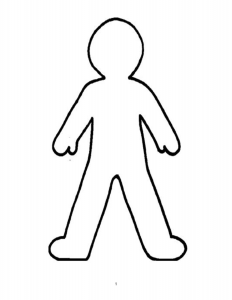Nerves and hormones teaching resources
Worksheets and lesson ideas to challenge students aged 11 to 16 to think hard about nerves and the hormonal system (GCSE and Key Stage 3)
When you study the nervous system it is a great opportunity to re-cap cell structure and cell specialisation. This clip below shows the removal of the central nervous system – don’t watch if you are squeamish but most students love it! And don’t forget about plants when you start introducing hormones – a lovely question is to ask students to think about is why plants haven’t evolved a nervous system, yet?!
Where to start?
Throw a soft ball at a student without warning them and see how they react to catch it. This can lead to a discussion of receptors, neurones and effectors.
Introducing the reflex arc and the nervous system
 Start by performing the knee jerk (patellar reflex) on a student. Now, get a large piece of paper and place it on the floor. Get the student to lie down on the paper and get another student to trace around their outline. Add on the main structures: brain, spinal cord, tendon, stretch receptor, sensory neurone, motor neurone and quadriceps femoris muscle. There is no connector neurone in this pathway, but you can get students to think about what is the problem of just having two neurones in this system. Add on the synapses and arrows to show the direction of the signal.
Start by performing the knee jerk (patellar reflex) on a student. Now, get a large piece of paper and place it on the floor. Get the student to lie down on the paper and get another student to trace around their outline. Add on the main structures: brain, spinal cord, tendon, stretch receptor, sensory neurone, motor neurone and quadriceps femoris muscle. There is no connector neurone in this pathway, but you can get students to think about what is the problem of just having two neurones in this system. Add on the synapses and arrows to show the direction of the signal.
Another great way to introduce nerves is to ask a student to touch an unusual object on a desk. Shout ‘bang’ when they nearly touch it and watch them withdraw their hand. This type of response will involve a connector neurone. The key thing here is to not get bogged down in the detail of nerve and effector names, but to understand that there are three three types of neurone and these are joined by synapses where the electrical signal changes to an electrical signal.
Neurones
It’s important that students understand that a neurone is simply a cell. Just like a cheek cell but longer – some can be 1m in length! Spend time comparing and contrasting neurones with other specialised cells.
Measuring the speed of a nerve impulse.
Get students to stand in a large circle. Ask them to hold hands and close their eyes. Nominate one student to start off the stimulus by squeezing the hand of the next door neighbour. Time how long it takes for the touch signal to pass around the circle returning back to the original student. Repeat this three times and take an average. Now using speed = distance (m)/time (s) you can calculate the speed of the nerve impulse. Remember, you need to measure the distance from the hand to the CNS and from the CNS to the effector. The speed should be 76.2 m/s. Discuss why the calculated speed is different to the actual speed.
Comparing the hormonal and nervous systems
GCSE worksheet comparing the hormonal and nervous systems. Students are presented with two aliens. One alien has a nervous system and the other alien has a hormonal system. Students then think through how their lives and biology would be different. This is quite a challenging worksheet with lots of application but could be easily adapted for your class. (PDF)
Thinking deeper
- Compare and contrast the advantages and disadvantages of reflexes in organisms
